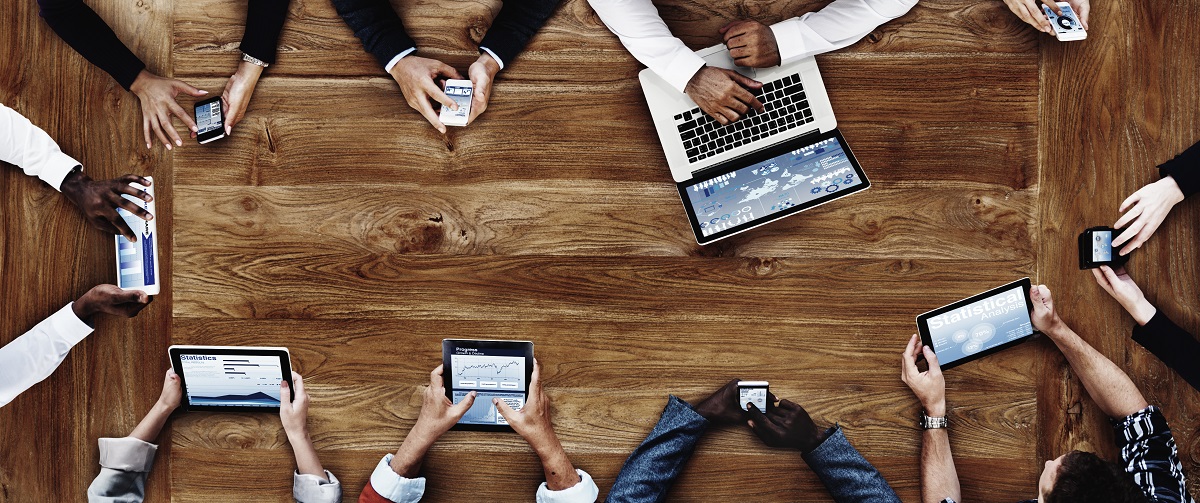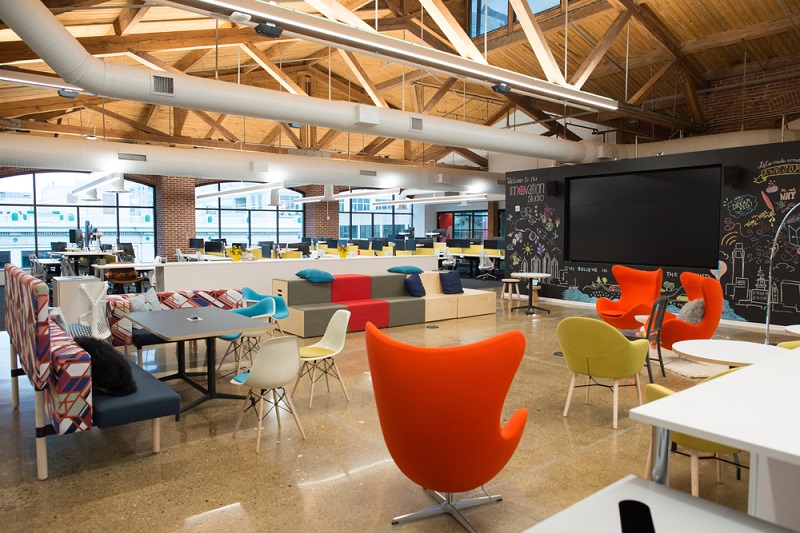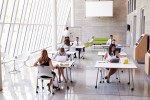The millennial generation makes up around one-third of the world’s workers and represents the largest age demographic in the U.S. labor market.
As a new generation continues to pour into the workplace, so do their sensibilities and values, the best of which are gradually being incorporated into innovative office designs across the world.
Changing Office Layouts
Dense cubicle cells have been a mainstay of corporate offices for more than 50 years. Though they’re an undoubtedly efficient use of floor space, for millennials, the humble cubicle is often an image of white-collar despair and isolation. It may be an unfair depiction, but cubicle-life has come to symbolize meaningless work, dead-end employment, and a relentless, unfulfilling grind through life.
As a generation that has grown up with this stereotype, millennials tend to seek out unconventional working environments, with many striving for the idyllic, innovative spaces promoted by the (arguably) most millennial of companies: Google.
Google is famed for the more eccentric inclusions to their workplaces, including golf putting greens and indoor climbing walls. It may seem extravagant, but these facilities are telling of a core principle at the heart of Google’s office design, and that principle is community. In a strive for constant innovation, Google uses a holistic approach toward workplace design to encourage the development of strong working and social networks between employees.
With floor plans that ensure nobody is more than two and a half minutes away from anyone else, Google uses physical space to bring employees from functionally distant departments into a close working proximity. David Radcliffe, a civil engineer at Google’s real estate department, described the rationale behind the company’s innovative choices: “In our building designs we are trying to remove the traditional friction that is created throughout the built environment to accelerate learning and information flows between our employees. The fact that the spaces turn out to look playful is really just a byproduct of this intent.” Helping employees organically develop relationships across the entire company is all an effort to capture the sparks of innovation, using open-office designs to create a relaxed and communal company culture where new ideas can flourish.
Google’s laid-back designs makes cubicle cells appear Draconian in direct comparison. Millennial-friendly designs are often characterized by openness, flexibility, and collaborative spaces. Simple changes, like the positioning of desks, can transform a workplace from a monotone cubicle landscape to a cooperative, communal space where employees can work together directly and indirectly.
All this openness and collaboration is certainly a nice idea, but in practice it comes with some pretty major downsides, the biggest of which is noise. Despite the drive for collaboration, employees across the U.S. rate co-worker interruptions and excessive noise as the biggest disruptions in the workplace. Equally, employees also rate a private office as the most desirable working space, preferable to home offices, open plan, and collaborative spaces. Unsurprisingly, the cubicle is seated firmly at the bottom of the list. The coveted corner office remains a highly sought-after environment for employees, and that need is likely to continue well into the millennial generation.
It seems that, no matter how collaborative or communal your employees may be, there will always be a desire for privacy, peace, and quiet to get work done.
Integrating Technology
Office design that synergizes with technology does much more than attract millennials, and fully embracing the ever-growing connectivity between digital devices brings unique opportunities into the workplace.
Technologies such as interactive whiteboards, smart TVs, and cloud computing services can inject versatility into many areas of the office, enabling impromptu meetings and presentations, increasing employee mobility, and offering all-round improvements in workplace flexibility.
The biggest advancement in recent years, and one that is continuing to expand, is the power and connectivity of portable devices. Literally thousands of work processes can be enabled with just a smartphone, meaning most work can now be completed from anywhere in the office, or even further afield.
Collaborative software applications, such as Slack and Ryver, use cloud-based services to create expansive and rich collaborative environments in the digital space. Through these technologies, businesses can operate with unprecedented levels of flexibility, unrestrained by the physical limitations of the past.
The ability to source work from anywhere in the world has also unlocked demand for a new type of space – the coworking office. Coworking brings new opportunities to established businesses, freelancers, and contractors, as well as building management and real estate enterprises. Coworking is a deep corner of the industry, fueled in no small part by the flexibility craved by millennials.
A Home at Work
Despite the popular and (often) negative depiction of millennials, a recent study reveals that 73% of millennials work 40 or more hours a week – with an average working week of 45 hours for millennials in the U.S. This impressive work ethic requires a workplace to match, and millennial workers are seeking out environments that can sustain these lengthy working hours.
Access to some home comforts and amenities can go a long way in attracting young employees, as well as improving daily productivity. Even simple on-site amenities, like an ATM, can result in hundreds of hours of salvaged time across the workforce.
Long hours also raise health concerns that are easily exacerbated by poor design in layout and furniture. Ergonomic designs take full consideration of the body’s needs, helping to maintain a solid posture and reducing the risk of repetitive strain injuries.
Natural lighting and air quality also play a role in ensuring the good health of your employees, especially those working long hours at computer monitors or other visual display units.
As much as coffee machines and beanbags can ease millennial burdens, the location of a workplace holds a great amount of influence. Enabled by digital technology, a millennial’s workplace often extends past the walls of the office, making the local vicinity an important consideration whenever possible.
Takeaways
Millennial design means more than just accommodating the needs of a demanding youth. A shift towards open, flexible design can enable entirely new business practices to develop. This enhanced maneuverability means businesses can better adapt to the shifting tides of the market, as well as maintain a healthy interest from the pool of fresh talent entering the workplace.
The inevitable march of time means that, like it or not, millennials are taking over the office. For any company to stay relevant, keeping up with current trends, and adapting the workplace to suit them, will be a necessity.












